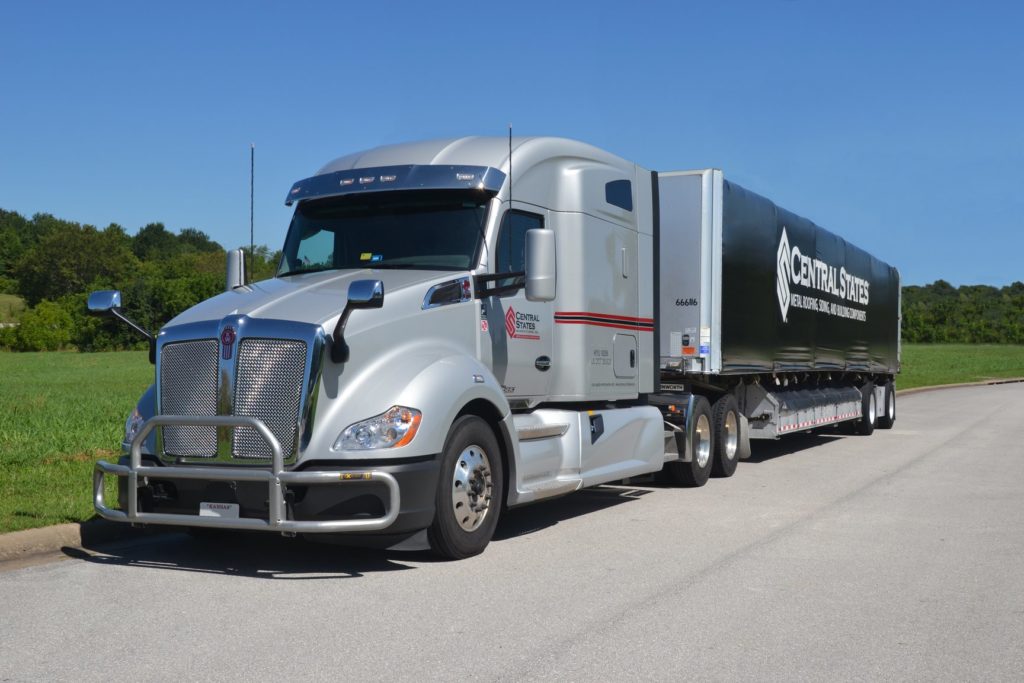Company helps workers meet financial needs before they retire
by Adria Scharf

For low- to moderate-income workers, Employee Stock Ownership Plans (ESOPs) can provide an important path to wealth accumulation. But most often that wealth is not available until retirement. Central States Manufacturing, located in Lowell, Arkansas, is addressing that limitation by allowing workers to access their wealth while they are still working.
ESOP Benefits and Limitations
ESOPs have several design features that make them beneficial to lower income workers.
Because ESOPs are designed as retirement plans, employees typically cannot access their share until they retire or leave the company.
First, ESOPs are statutorily inclusive. They’re required by law to cover all or most employees on payroll, from the frontline to the C-suite.
Second, eligible employees are automatically enrolled without having to opt in. This makes the benefit accessible to employees regardless of their level of information or savvy.
Third, and importantly, ESOPs are normally funded entirely by the employer. It is a free benefit paid for by the company. For workers with limited disposable income, this is key.
Advantages of ESOP Structure for Low Wage Employees

In the 2019 report Building the Assets of Low and Moderate Income Workers and Their Families, Rutgers University researchers found that low- to moderate-income employee owners in 21 firms with ESOPs had median retirement savings of $215,000. That’s notable, when nearly half of U.S. families have no retirement savings at all.
For all its benefits, however, the ESOP model has a real limitation from the perspective of workers experiencing economic precarity. Because ESOPs are designed as retirement plans, employees typically cannot access their share until they retire or leave the company.
On the one hand, this preserves ESOP balances as a source of retirement wealth and facilitates asset growth through compound interest. On the other hand, for low-wage workers navigating housing, school and medical costs, and emergencies, with limited disposable income, the ability to tap into their wealth, to access liquidity, is vitally important.
It turns out that some ESOP companies have overcome this limitation by permitting workers to access a portion of their ownership wealth while they are still working. Central States Manufacturing is one such company. A recent case study in the Journal of Employee Ownership and Participation examined how the firm’s ESOP simultaneously shares significant wealth with employees and makes some of that “wealth benefit” accessible to workers during their years of employment.
Central States Manufacturing and the ESOP Miracle
Central States Manufacturing, Inc., makes metal building components and building packages. It employs more than 1,000 people nationally across 11 sites. About half of the company’s employees work in production and another 130 are truck drivers. The remaining employees are office personnel. Starting wages for the company’s lowest-wage employees range from approximately $16 to $18.
Central States was once featured in Forbes in an article entitled “The Millionaire Truck Driver and Other ESOP Miracles,” and indeed, workers who stay at the company for a period of years—including truck drivers and production workers—can build seemingly miraculous sums of wealth.
The average ESOP account balance for an individual who has worked for over ten years at the company is just shy of $500,000. For an individual employed for over 15 years, the average ESOP account balance is over $1,000,000, according to Chief Financial Officer Chad Ware. “One employee owner with the company just retired [after 25 years] with over $5 million in their ESOP account,” says Ware.
Pre-Retirement Liquidity
At most ESOP companies, employees must wait until they retire or separate from the firm before they can tap into their ESOP wealth. At Central States, however, employees have access to liquidity while they are still employed through two programs: hardship withdrawals and in-service withdrawals.
At Central States, employees have access to liquidity while they are still employed through hardship withdrawals and in-service withdrawals.
Hardship distributions: The Central States ESOP plan document allows participants to receive hardship distributions, which are permitted but not required by the IRS. Such distributions are defined by the IRS as for “immediate and heavy financial need,” including medical care expenses, the purchase of a principal residence, tuition and other educational expenses for post-secondary education, eviction prevention, and other safe harbor situations of financial hardship.
Central States not only permits employees to access withdrawals for these purposes, it proactively educates employees about this opportunity. In 2020, the ESOP paid out about 26 hardship withdrawals totaling just under $2.5 million. The average amount employees withdrew from their accounts was $90,000. (Employees must pay an extra 10 percent tax penalty; the company instructs them about that.)
For example, a production worker took out around $100,000 when a close family member needed to go to a special hospital for care. A truck driver, who had been with the company about 14 years, took out over $200,000 to buy a home. He and other employees who withdraw funds for this purpose often say, “Without the ESOP hardship withdrawal, I’d never have owned a home.”
In-service distributions: More unusually, Central States also gives workers access to in-service withdrawals, meaning current employees may access a portion of their account balance each year.
In 2021, an employee who had worked at Central States for six years could make an annual withdrawal of up to $5,000. Someone employed for at least 10 years was allowed up to $10,000. An employee of 15 years could withdraw up to $15,000. The in-service withdrawal is popular: approximately 100 active employees requested and received in-service withdrawals in 2019 and 2020.
The company streamlines the process to reduce the administrative complexity: During a window of time each year in the fall, letters are mailed to people who are eligible. Employees fill out the form and the company remits the funds to them. “There’s no stipulation, it’s just ‘do you want $5, 10k or $15k?’” says Ware. New changes approved this year will allow employees to take in-service withdrawals after just two years of service starting in 2022 and will increase the amount that employees can withdraw.
Balancing Short- and Long-term Needs
Some observers may argue that such withdrawal opportunities undercut the value of the ESOP as a deferred benefit. Clear communication is key at Central States. While on the one hand, the company informs employees of their right to hardship and in-service withdrawals, on the other hand, it also reminds employees that if they leave the shares in their ESOP accounts for 20 or more years without withdrawing any shares, their accounts will likely be worth exponentially more through the power of compounding.
Central States is unusual in the sheer amount of wealth that longtime employees, including production and trucking employees, accumulate through the ESOP. Given the unusual size of participants’ ESOP account balances, its design choices make sense. The same is not likely going to be true for every ESOP. Still, its choices are worth considering in light of the growing interest in ESOPs as a tool to benefit lower wage workers and address the wealth gap.
Adria Scharf, PhD, is a Beyster Fellow and director of the Curriculum Library for Employee Ownership at the Institute for the Study of Employee Ownership and Profit Sharing at Rutgers University’s School of Management and Labor Relations.
To follow Employee Ownership News, subscribe to the Fifty by Fifty newsletter or follow us on Medium.
